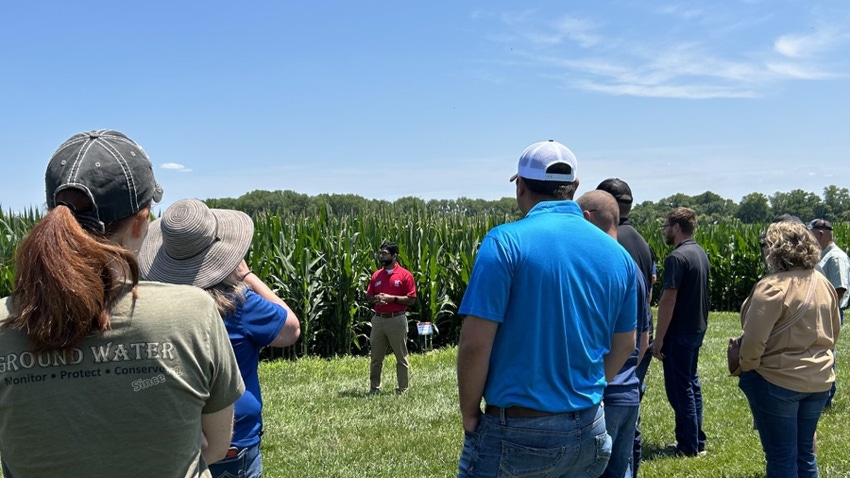
Sometimes it can feel like a balancing act, deciding how much fertilizer to spread while still maximizing return. In a 15-year-long study at the University of Nebraska-Lincoln, researchers analyzed what application strategy would allow farmers to maximize yields while still being economically savvy.
“Depending on where you are in the country and who you talk to, different folks may use different strategies for implementing phosphorus applications,” said Swetabh Patel, a postdoctoral research associate at UNL, at a 4Rs nutrient stewardship field day held last summer at the Eastern Nebraska Research and Education Center near Mead.
The 4Rs stands for right source, right rate, right place and right time, in terms of nutrient management.
It is important to take into consideration the soil type, management practices and goals of the operation before implementing a new strategy. But in field trials at the Haskell Agricultural Lab near Concord, Neb., researchers found that crop removal with phosphorus application was the most efficient strategy, taking input costs and yield into consideration.
3 options for application
Patel said there are about 200-300 pounds of phosphorus per acre found in the soil. The catch is not all this phosphorus is readily available for the crops.
“The movement of phosphorus in the soil is very slow, and most of the phosphorus is taken up by the plant by a process called diffusion,” Patel said. “Therefore, the process, proximity and rate of phosphorus that is applied is really important when it comes to its uptake by the plant.”
This study looked at three fertilizer application strategies that would maximize uptake by the plants:
Deficiency correction. This strategy is intended to optimize profit because it is based off the critical soil test levels. However, the risk is that in some years, or some locations within the field, the nutrient supply may limit yield.
Crop removal. In this application strategy, farmers add phosphorus based on what last year’s crop removed through uptake. This is highly dependent on the soil type, so the amount of phosphorus added will vary.
Maintenance and build. Intended to minimize potential nutrient limitations to yield, producers risk that no yield increase will occur with application or increased rate of nutrients. The biggest risk is over-application, which would reduce profits.
Testing the strategies
Before conducting this study, the soil levels were at 16 parts per million of phosphorus. All the treatments received 168 ppm of nitrogen, except the control treatment.
In addition to the control, there also were five other treatments of nitrogen only, a crop removal with phosphorus, and three treatments that were maintained at 15 ppm, 30 ppm and 45 ppm of phosphorus.
This study was conducted on continuous corn that was all rain-fed. With the initial application of phosphorus, researchers found higher levels in the soil than expected. However, after the four-year mark of this study, levels reduced near the target levels.
As hypothesized, the more phosphorus added increased the yield. However, that difference in yield might not be worth the investment based on the price of phosphorus and the return gained.
“Crop removal with phosphorus has the highest return in percentage return compared to all the other treatments.” Patel said. “Which makes crop removal the most economical and profitable phosphorus management strategy.”
At the end of this study, Patel and his team concluded that the phosphorus treatments all produced somewhat similar yields, but the crop removal and the 15 ppm of phosphorus treatment achieved those yields with less application.
With the efficiency and economic benefits of the crop removal strategy, it can be worthwhile to consider crop removal the next time producers apply phosphorus.
Learn more at agronomy.unl.edu.
Read more about:
FertilizerAbout the Author(s)
You May Also Like






